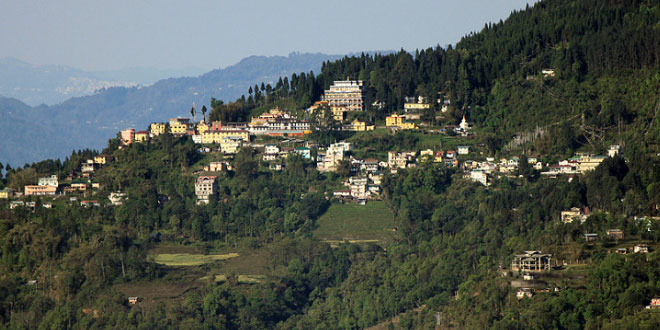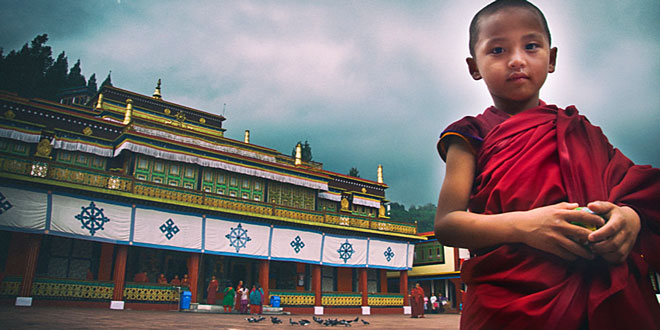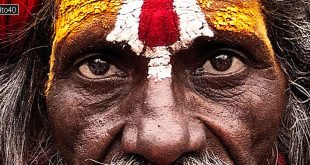History of Rumtek Monastery
In 1959, when the 16th Karmapa, His Holiness the Gyalwa Karmapa, fled Tibet because of Chinese invasion, the monastery was in ruins. Though the king of Sikkim and the Government of India offered him many sites to build a monastery, he chose Rumtek because he believes that this site has auspicious qualities. The original monastery was destroyed by a fire in the 20th century, so the new monastery was constructed near it and is called the Rumtek Dharma Chakra Centre. The new monastery has many modern facilities such as monk quarters. The funding for the monastery came from both the Government of India and the Sikkim Royal family. The construction was completed by 1966 and, in the same year, all the sacred items and relics were installed in the shrine, which the 16th Karmapa had brought with him from Tsurphu monastery in Tibet. On Tibetan New Year’s Day, in 1966, the Karmapa’s seat at Rumtek was officially inaugurated.
The Rumtek monastery was recently in the news when the two rival organizations, the Karmapa Charitable Trust, supporting Trinley Thaye Dorje, and the Tsurphu Labrang group, that supports Ogyen Trinley Dorje, both stood as candidates for the 17th Karmapa, claiming stewardship of the Rumtek monastery and its property. The rivalry even reached the Indian Courts.

Major Attractions
The main structure of the monastery is in strict accordance with the traditional Tibetan architecture and is beautifully embellished with murals and traditional Tibetan art works. The monastery holds many sacred relics, paintings, manuscripts, art objects and religious scriptures. The monastery can be a nature lover’s delight as it is situated near a flowing stream and pristine forests. The calm and serene environment that reverberates with the chants of monks can be a truly enriching experience. Tourists can spend their time here just relaxing and recuperating. Behind the monastery is the Karma Shri Nalanda Institute, which is devoted to propagating the teachings of Lord Buddha. In June, the monastery organizes the Tsechu dance that is very famous among tourists. Tourists can also spend their time at a botanical garden near the monastery.
The best time to visit Rumtek Monastery is from March to late May and from October to Mid-December.
How to Reach Rumtek Monastery
By Air:
The nearest airport is Bagdogra airport, in West Bengal, at a distance of 124 kilometers. It is connected to all the major cities in India. There is also a helicopter service available that connects Bagdogra to Gangtok.
By Train:
The nearest rail stations are at Siliguri situated 114 km from Rumtek and New Jalpaiguri railway station, which is at a distance of 125 km from here.
By Road:
Rumtek is well connected to rest of India through an extensive road network. You can avail regular bus services from Bagdogra, Darjeeling, Kalimpong and Kolkata to reach Rumtek. Taxi services are also available from these cities.
Located at about 24 km from Gangtok, the capital of Sikkim, India, Rumtek Monastry is a famous Buddhist monastery and an important Buddhist religious centre. The tranquil environment of the place is the best to get away from the hustle and bustle of urban life. Surrounded by verdant hills Rumtek is an excellent nature getaway.
 Kids Portal For Parents India Kids Network
Kids Portal For Parents India Kids Network







